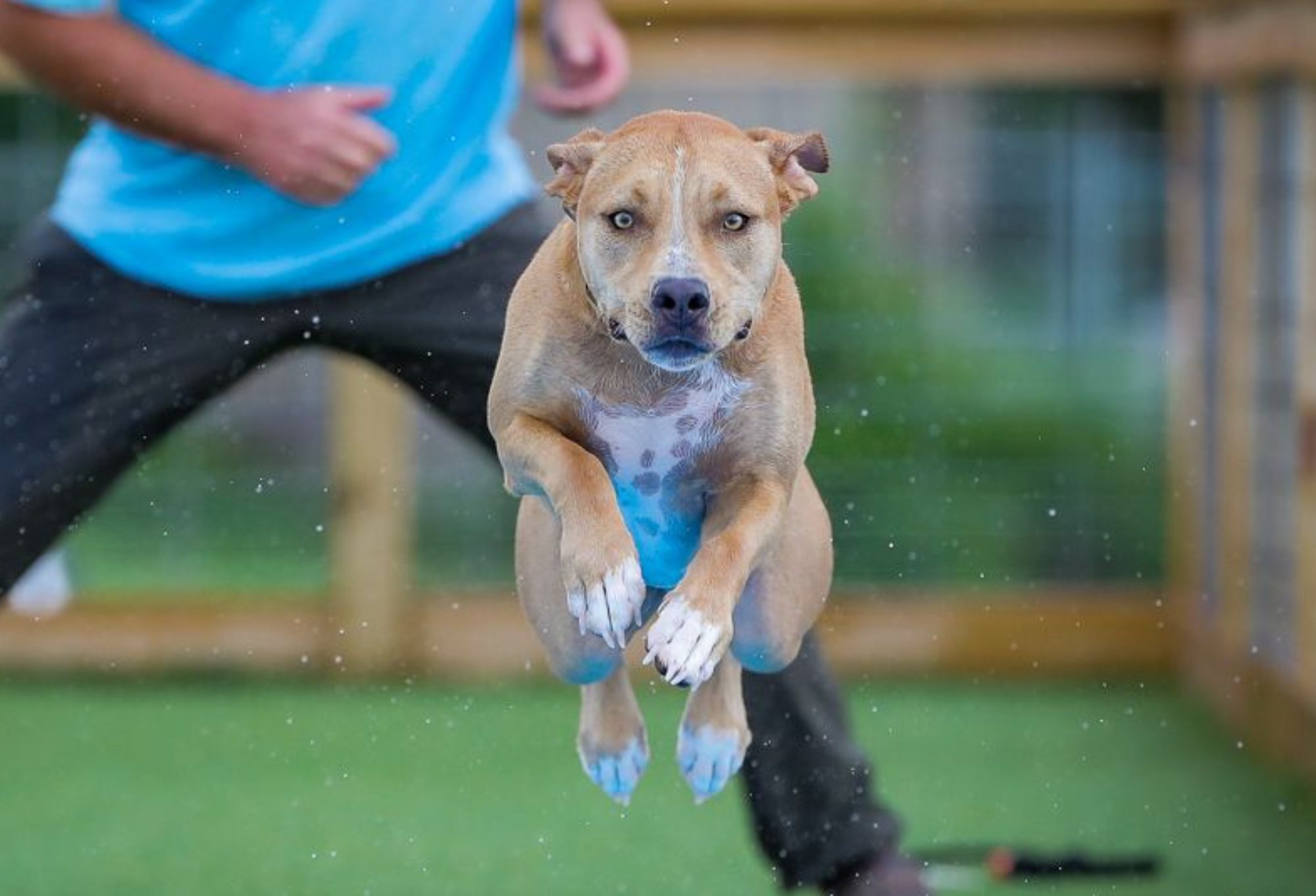We don’t have the luxury of having a diving dock facility in closer proximity – most folks actually don’t – and had to get creative designing training scenarios using whatever is or was available within our personal environment. Being an animal trainer all my life, understanding the importance of pattern recognition that connects to signals and aids (body language, sounds, voice commands) , I had to design set ups and training challenges that were fun, challenging, strengthening and most important protective towards soundness issues. Bernhardt for example has a signature move he loves to do : the football tackle, featured in one of the videos on this blog, a move replicating taking a target down. That particular move was in fact one of the big drivers leading us into the sport of dock diving to not take instincts away but creating a softer landing spot. So here are some training snippets we work on :
The Warm up featuring – “THE TACKLE“
The warm up routine can vary based on what we are working on. Before we do anything there will be a substantial walk interacting with the toy of choice, eventually some stretches, short little runs and accelerations – together – and small tiny jumps into the toy held by hand. After that we look for smaller obstacles to work with like this little log on the ground and work that or similar a few times to than step up a notch to a higher obstacle. I personally do not like my dog to land a lot on his forehand, it puts quite some weight on it and seems contrary to stretching out in the air so I keep those exercises as brief as possible. “The tackle” needs to be very closely monitored but not suppressed being a natural instinct driven move. There is a good amount of injury risk in it and seemingly self preservation had surrendered pure prey hunting conditioning. It is not always preventable or avoidable, Bernhardt however is quite skillful doing it and seems to take great pride in his action.
To be successful in all disciplines of dock Diving a strong play/prey (toy) drive is extremely important and the foundation towards any progression in difficulty. I really want my dog to pursue the target to his very best ability and not to give up easily. He has to feel good, naturally confirmed and accomplished in his activity, so whatever display and technique nature equipped him with – I take it. My responsibility as a trainer is simply to make sure the moves do not go out of control or are repeated way to often or unreasonable. Soundness is always ultimate priority.
Teaching the basic jump patterns is not very hard, using correct gestures, incentives – toys,treats, sounds – precise placing, distances and instant rewards. Jump courses are a total different ball game, it is more about putting the individual pieces together.
